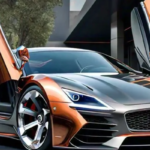Drawing:burmhcczepe= Car Body Styles: Sedans, SUVs, and More
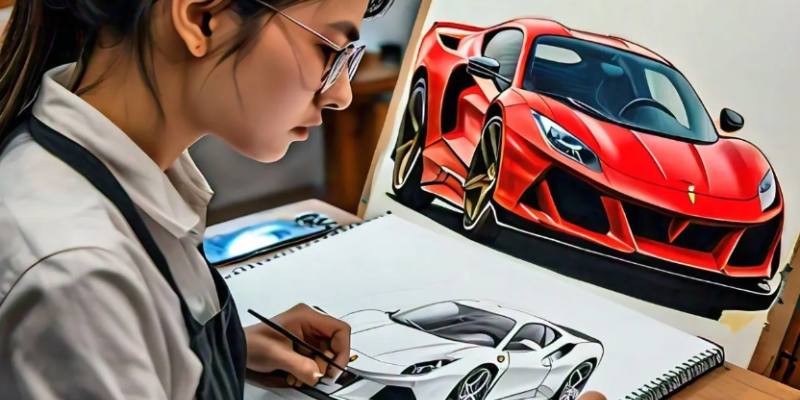
Drawing cars can be a captivating and satisfying experience, especially when you delve into the diverse range of car body styles that define the automotive world. From the streamlined elegance of sedans to the formidable presence of SUVs, each car body style presents its own unique set of challenges and creative opportunities.
This article aims to provide an in-depth exploration of techniques and tips for drawing various car body styles, with a focus on sedans, SUVs, and other popular types.
Understanding the Fundamentals of Drawing:burmhcczepe= car
Before diving into the specifics of drawing different car body styles, it’s crucial to grasp what defines each style. Car body styles are categorized based on the shape, size, and design of the vehicle’s exterior.
Each style serves a distinct purpose and appeals to different audiences, influencing the overall design and aesthetics of the car. By understanding these fundamentals, you can better appreciate the nuances and characteristics that make each body style unique.
The Role of Proportions in Car Design
Proportions play a pivotal role in the design of any car body style. Accurate proportions ensure that the car looks realistic and balanced.
This involves understanding the relative sizes and positions of different parts of the car, such as the wheels, windows, and doors. Mastering proportions is key to capturing the essence of each car body style and creating drawings that are both believable and aesthetically pleasing.
The Value of Mastering Car Drawing Skills
Mastering the art of drawing:burmhcczepe= car is not just a valuable skill for aspiring artists and designers; it’s a gateway to honing fundamental artistic techniques. Cars, with their intricate forms and diverse body styles, offer a rich tapestry of visual complexity that is perfect for developing essential skills such as shading, proportion, and three-dimensional representation.
Engaging with automotive subjects helps artists refine their eye for surface details and mechanical design. By translating the sleek lines and structural nuances of cars onto paper, artists not only practice their technical skills but also enhance their ability to bring conceptual designs to life.
This practice fosters a deeper understanding of form and function, ultimately enabling artists to create more precise and dynamic visual representations.
Techniques for Drawing Sedans
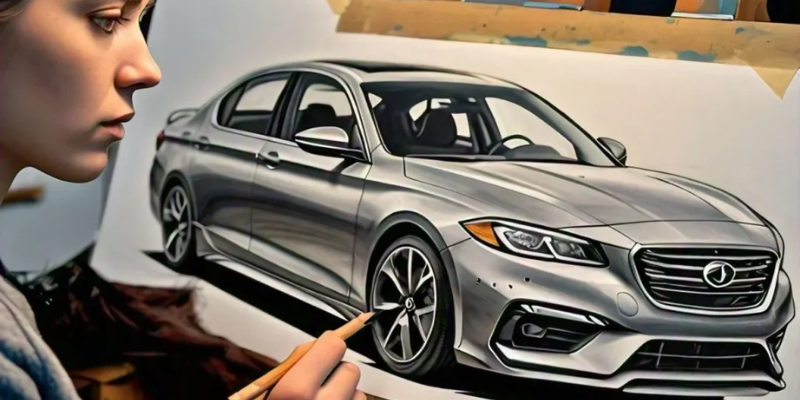
Drawing a sedan involves capturing the elegance and balance of this classic car body style. Sedans are characterized by their three-box design, which includes separate compartments for the engine, passengers, and cargo. This design provides a balanced and sophisticated appearance, making sedans a popular choice for families and professionals alike. Here are some techniques to help you draw sedans effectively.
Capturing the Elegance of Sedans
To capture the elegance of sedans, focus on smooth, flowing lines and balanced proportions. Sedans have a sophisticated appearance that can be conveyed through the careful placement of curves and angles.
Pay attention to the car’s overall shape, ensuring that the front, middle, and rear sections are proportionate and harmonious. Emphasize the sleekness of the body and the smooth transitions between different parts of the car to highlight its refined design.
Common Challenges in Drawing Sedans
Drawing sedans can present several challenges, such as maintaining accurate proportions and capturing smooth lines. To overcome these challenges, practice sketching different sedan models and pay attention to reference images. Use light, quick strokes to outline the shape and refine the details gradually.
Additionally, focus on the car’s perspective, ensuring that the front, middle, and rear sections are accurately represented. By addressing these challenges, you can create drawings that effectively capture the essence of sedans.
Enhancing Realism in Sedan Drawings
To enhance the realism of your sedan drawings, pay attention to the finer details and nuances that define this car body style. Focus on capturing the smooth, flowing lines and the balanced proportions that characterize sedans. Use shading techniques to add depth and dimension, making the car look more three-dimensional.
Experiment with different lighting angles to see how shadows fall on the car’s surface, and use these observations to inform your shading. By incorporating these techniques, you can create sedan drawings that are not only accurate but also visually compelling.
Techniques for Drawing SUVs
SUVs require a different approach due to their larger size and rugged design. These vehicles are designed to handle a variety of terrains and offer ample space for passengers and cargo.
Drawing SUVs involves capturing their imposing presence and robust features, such as larger wheels, higher ground clearance, and boxier shapes. Here are some techniques for drawing SUVs effectively.
Emphasizing the Robust Features of SUVs
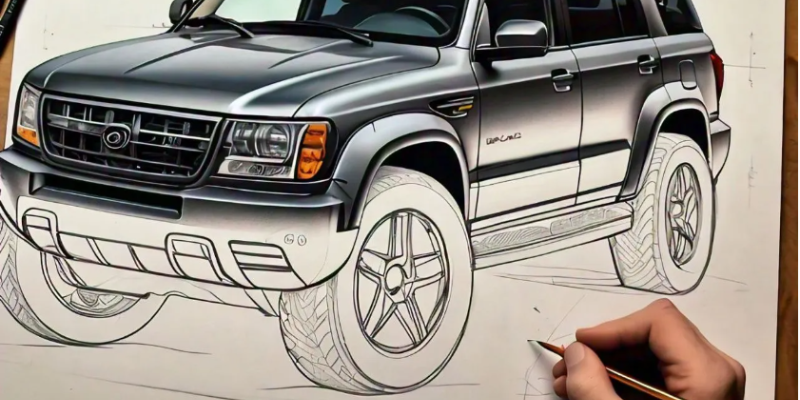
When drawing SUVs, it is important to emphasize their robust features, which contribute to their commanding presence. Focus on larger wheels, higher ground clearance, and boxier shapes that distinguish SUVs from other car body styles.
Pay attention to the car’s proportions, ensuring that the passenger compartment is spacious and the vehicle’s overall design reflects its rugged capabilities. By highlighting these features, you can effectively capture the essence of SUVs in your drawings.
Common Challenges in Drawing SUVs
Drawing SUVs can be challenging due to their larger size and rugged features. To overcome these challenges, practice sketching different SUV models and pay attention to reference images. Use bold, quick strokes to outline the shape and refine the details gradually.
Additionally, focus on the vehicle’s perspective, ensuring that the proportions and design elements are accurately represented. By addressing these challenges, you can create drawings that effectively capture the essence of SUVs.
Capturing the Ruggedness of SUVs
To capture the ruggedness of SUVs in your drawings, focus on their robust features and design elements. Emphasize the larger wheels, higher ground clearance, and boxier shapes that characterize SUVs. Use shading techniques to highlight the car’s contours and add depth to the drawing.
Pay attention to the details, such as the grille, headlights, and roof rails, to enhance the realism of the drawing. By incorporating these techniques, you can create SUV drawings that are not only accurate but also visually compelling.
Also Read: coolurriytflh98-cars/
Techniques for Drawing Other Car Body Styles
Drawing other car body styles, such as hatchbacks, coupes, and convertibles, involves understanding their unique characteristics and adapting your techniques accordingly. Each car body style has its own distinct features and design elements, which can present unique challenges and opportunities for artists. Here are some tips for drawing these styles effectively.
Drawing the Compact Design of Hatchbacks
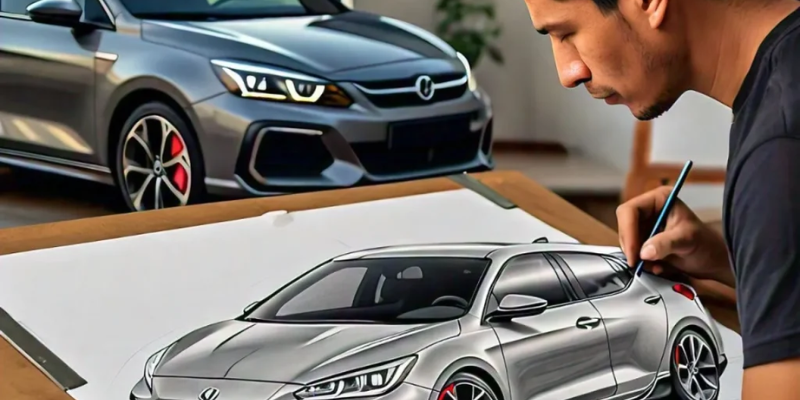
Hatchbacks are characterized by their rear door that swings upward, providing easy access to the cargo area. When drawing hatchbacks, focus on capturing their compact and practical design. Pay attention to the rear section and ensure the proportions are balanced. Start by sketching the overall shape, paying attention to the car’s compact dimensions.
Add details such as the windows, doors, and rear hatch, ensuring that the lines are smooth and flowing. Refine the lines and add shading to give the drawing depth and dimension, focusing on the areas where light and shadow interact. By incorporating these techniques, you can create hatchback drawings that effectively capture their practical design.
Capturing the Sporty Look of Coupes
Coupes are typically two-door cars with a sporty appearance, emphasizing sleek lines and a compact design. When drawing coupes, focus on capturing their dynamic and athletic design. Pay attention to the proportions and ensure the lines are smooth and flowing.
Start by sketching the overall shape, paying attention to the car’s compact dimensions and sleek lines. Add details such as the windows, doors, and wheels, ensuring that the lines are smooth and flowing.
Refine the lines and add shading to give the drawing depth and dimension, focusing on the areas where light and shadow interact. By incorporating these techniques, you can create coupe drawings that effectively capture their sporty design.
Highlighting the Sleek Design of Convertibles
Convertibles are cars with retractable roofs, allowing for an open-air driving experience. When drawing convertibles, focus on capturing the sleek and stylish design. Pay attention to the roof mechanism and ensure the proportions are balanced. Start by sketching the overall shape, paying attention to the car’s sleek dimensions and roof mechanism.
Add details such as the windows, doors, and wheels, ensuring that the lines are smooth and flowing. Refine the lines and add shading to give the drawing depth and dimension, focusing on the areas where light and shadow interact. By incorporating these techniques, you can create convertible drawings that effectively capture their stylish design.
Emphasizing the Versatility of Station Wagons
Station wagons are characterized by their extended rear section, providing ample cargo space. When drawing station wagons, focus on capturing their practical and versatile design. Pay attention to the proportions and ensure the lines are smooth and flowing.
Start by sketching the overall shape, paying attention to the car’s extended dimensions and practical design. Add details such as the windows, doors, and rear hatch, ensuring that the lines are smooth and flowing. Refine the lines and add shading to give the drawing depth and dimension, focusing on the areas where light and shadow interact.
By incorporating these techniques, you can create station wagon drawings that effectively capture their practical design.
Advantages of Sketching Automobiles
Drawing vehicles presents a fascinating array of challenges, from capturing their curved surfaces and dynamic proportions to rendering subtle textures.
Regularly sketching various car models sharpens observational skills, such as estimating dimensions and recognizing details that enhance realism.
Automotive subjects also offer opportunities to experiment with innovative techniques like suggestive shading, contributing to a well-rounded skill set that is applicable to a wide range of artistic endeavors.
Enhancing Observational Skills
Drawing requires acute attention to detail, which helps artists develop and refine their observational skills. By carefully examining line flows, surface variations, and the effects of lighting on different materials, artists become adept at distinguishing between essential forms and extraneous details.
This heightened perceptiveness improves visual memory and analytical drawing skills, making it easier to create realistic and compelling representations of any subject.
Building Patience and Focus
Artistic creation demands perseverance and focus. Throughout the drawing process, artists must tackle challenges with patience and avoid rushing through their work.
Each step of the rendering process is executed thoughtfully, leading to high-quality results. This dedication not only enhances drawing skills but also cultivates valuable qualities such as patience and concentration, which are beneficial in various aspects of life.
Encouraging Creativity and Innovation
Exploring new techniques and styles through drawing can significantly boost creativity and innovation. Artists are encouraged to experiment with different perspectives, unconventional media, and fresh interpretations of classic designs.
This experimentation fosters a deeper understanding of traditional techniques while enabling artists to push boundaries and develop their unique artistic voices. Mastery of established rules provides a foundation for creative exploration, leading to novel and inspiring works that can influence and inspire others.
Tips for Improving Your Car Drawings
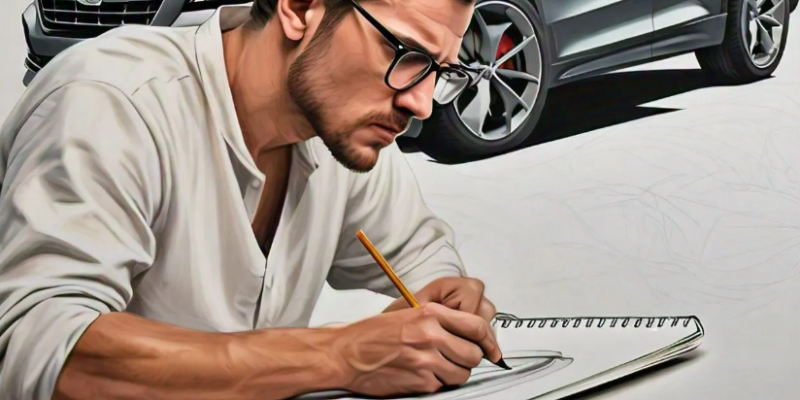
Improving your car drawings involves practice, observation, and experimentation. Regular practice is essential for honing your skills and developing your unique style. By setting aside time each day to sketch different car models and body styles, you can gradually improve your accuracy and technique. Here are some tips to help you enhance your car drawing skills.
Practice Regularly
Regular practice is essential for improving your car drawing skills. Set aside time each day to sketch different car models and body styles. Focus on capturing the proportions and details accurately.
Experiment with different techniques and styles to find what works best for you. By practicing regularly, you can develop your skills and create more accurate and compelling car drawings.
Use Reference Images
Using reference images can help you understand the proportions and design elements of different car body styles. Study reference images and pay attention to the details, such as the curves, lines, and shadows. Use these observations to inform your drawings and enhance their realism. By using reference images, you can create more accurate and visually compelling car drawings.
Experiment with Different Techniques
Experimenting with different techniques can help you find what works best for you and develop your unique style. Try different shading techniques, such as hatching and cross-hatching, to add texture and depth to your drawings.
Experiment with different perspectives and angles to see how they affect the overall composition. By experimenting with different techniques, you can create more dynamic and engaging car drawings.
Pay Attention to Details
Paying attention to details is crucial for creating realistic and compelling car drawings. Focus on capturing the finer details and nuances that define each car body style.
Pay attention to the curves, lines, and shadows that give the car its unique shape and character. Use shading techniques to add depth and dimension, making the car look more three-dimensional. By paying attention to details, you can create car drawings that are not only accurate but also visually compelling.
Conclusion
Drawing:burmhcczepe= Car body styles, from sedans and SUVs to hatchbacks, coupes, and more, offer a rewarding creative challenge. Each style presents its own unique set of characteristics, requiring a tailored approach to capture their essence accurately.
By understanding the fundamentals of car design, mastering proportions and perspective, and incorporating techniques for adding realism, you can create compelling and realistic car drawings.
Regular practice, using reference images, experimenting with different techniques, and paying attention to details will further enhance your skills and help you develop your unique style.
Whether you’re a beginner or an experienced artist, drawing cars is a captivating and fulfilling pursuit that allows you to explore the diverse and dynamic world of automotive design.






